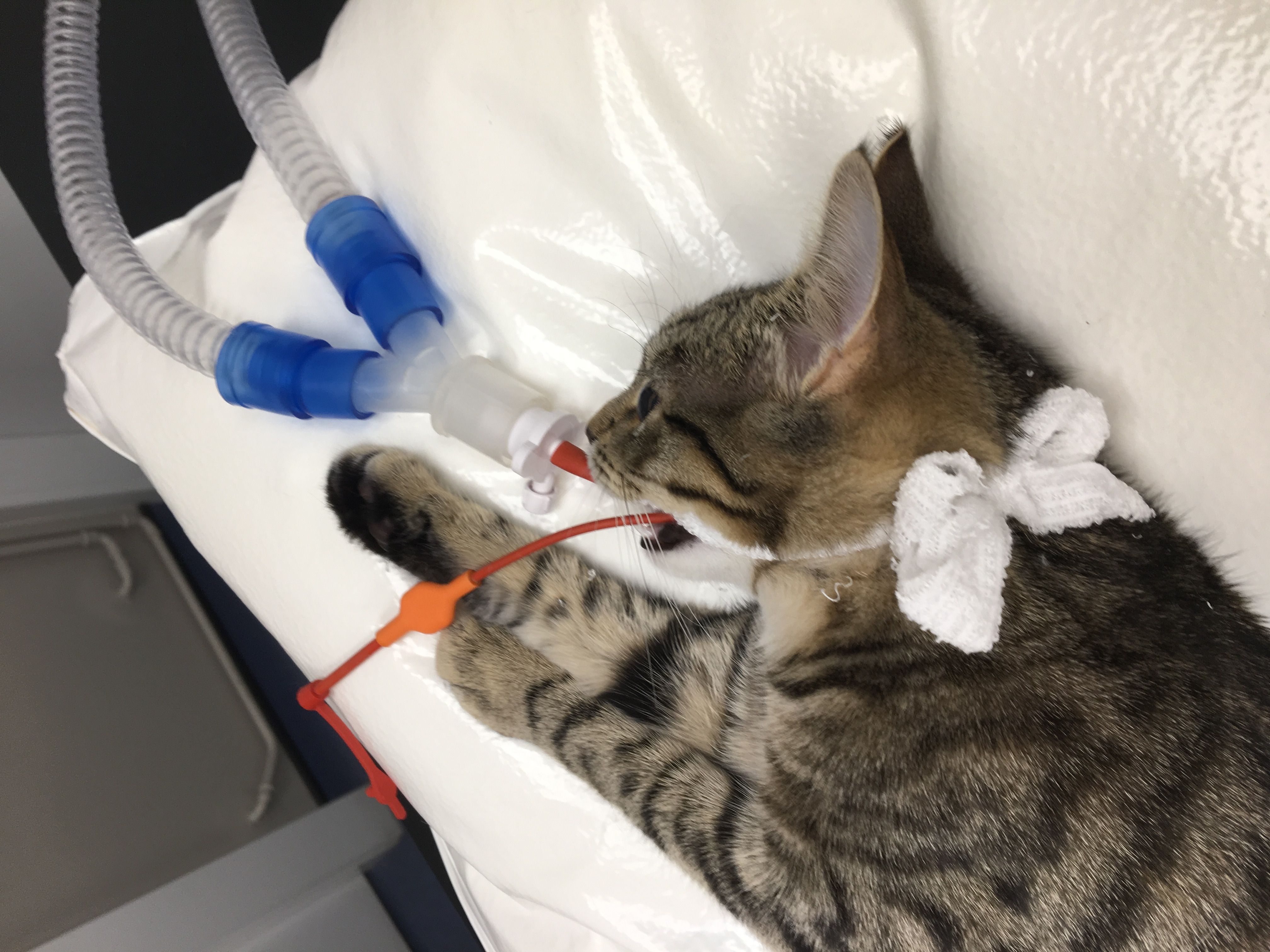One of the things owners dread the most is when their pet requires a general anaesthetic. There is no doubt that just as in people there is a risk involved. However, the complication rate is exceptionally low and general anaesthetics in healthy individuals are considered safe procedures.
So, what happens when your pet goes in for an anaesthetic?
At Donaldson’s Vets all animals will have a full physical examination before any drugs are given. This examination will include a very important heart check, as well as a gauge of the patient’s hydration and general health status. We offer all patients undergoing an anaesthetic a blood test. This will confirm the hydration status, check protein levels, sugar levels and liver and kidney parameters. It is amazing the number of times I have picked up underlying health issues with this blood test, and adjusted my anaesthetic protocol as a result. For dogs and cats over 10 years of age I would almost consider a pre-anaesthetic blood sample a must.
One example of something we may do differently is if we have an elderly or dehydrated patient, or one with a bad heart. We will put these animals on a fluid drip to make sure their blood pressure doesn’t drop too low whilst they are under.
Once we are satisfied that the blood parameters are normal we will give a pre-medication injection. This is like a mild sedative where the patient will be drowsy but still awake. The reason we give this pre-medication is to make the induction and recovery from anaesthesia is as smooth as possible. It also means we have to use smaller amounts of many drugs, rather than lots of one. This will reduce the likelihood of unwanted side effects.
Pain relief
Along with the pre-medication we will also inject some pain relief, so it is well in the system before any surgery is performed. Experiments in human and animals show that if you inject earlier, rather than at the time of surgery, the patient feels less discomfort when they wake up.
After about 40minutes we are ready for our anaesthetic. Most commonly we inject a substance called Propofol into the vein. This will ‘induce’ anaesthesia and allow us to pass a tube (called an endotracheal tube) into the windpipe. This tube is attached to an oxygen and anaesthetic gas combination, which will ‘maintain’ our patient in their state of general anaesthesia.
Recovery after surgery
Once the surgery is done, we turn off the anaesthetic gas and change onto pure oxygen for at least 5 minutes. The patient is then taken off gas altogether, but the tube will remain in place until the pet starts to swallow, at which point it is removed. The pet is then carried back to bed and covered with a blanket to keep them warm. Some patients come around very quickly, others take several hours to fully recover. A nurse will monitor the patients until they are happy that the animal is aware of their surroundings and their parameters, including body temperature, are normal.
Occasionally some animals require an overnight stay, but most will be able to go home to their families the same night for some much needed rest and TLC.

